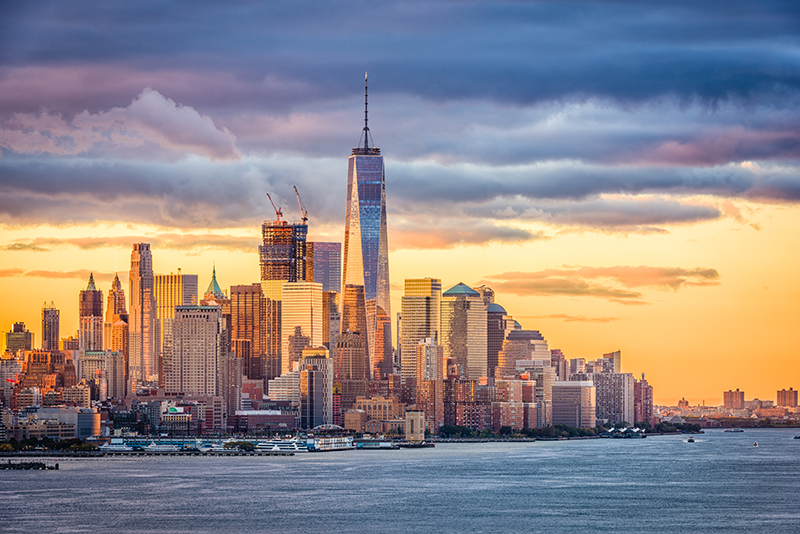Manhattan Rent Premiums Outpace the Outer Boroughs

- Manhattan’s average rents remain well above all other New York City boroughs.
- Minimum rent premiums for Manhattan apartments range from 20% in small properties to 30% percent in large buildings.
- Average rents have been increasing faster in the outer boroughs across all property types.
Manhattan Has Higher Rents, Lower Premiums on Small Multifamily
We add another layer into our analysis of New York City’s rental market by examining average monthly rents and rent premiums by property types across the city’s boroughs.
It’s well known that Manhattan has the highest average rents in New York City and nationwide. Here, we compare Manhattan rent levels against the city’s outer boroughs.
The latest U.S. Census Bureau data on the five boroughs’ indicate that average monthly gross rents in Manhattan reached $1,720 for small apartment buildings and $1,820 for large multifamily by the end of 2017.
In comparison, small multifamily rents in Brooklyn averaged around $1,460. Queens followed closely behind at $1,430. The Bronx and Staten Island trailed further behind with monthly rents of $1,110 and $1,100, respectively.
Small multifamily rents in Manhattan contained price premiums of 18% above the next most expensive borough, Brooklyn. When measured against the least costly, Staten Island, Manhattan’s rental premium reached up to 57%.
Similarly, for large multifamily properties, Manhattan’s average rent of about $1,820 topped the list. Queens followed in second at $1,430, reflecting new high-rise development in Long Island City. Brooklyn stood at $1,210 and the Bronx at $1,050, while Staten Island lagged at $870. Manhattan premiums ranged from as low as 27% against Queens to as high as 109% against Staten Island.
Outer Boroughs Experiencing Greater Rent Increases
Average rent increases between 2015 and 2017 in large multifamily were most pronounced in Staten Island, with average rent bills climbing close to 17%. Brooklyn and the Bronx followed next with increases of 9% apiece. Both Manhattan and Queens had lower rent increases because of their higher shares of new inventory, as discussed previously.
For the small multifamily rental market, average rent increases between 2015 and 2017 were clustered together in a narrow band. Rent increases were slowest in Manhattan, at 2.7%, and fastest in Brooklyn, at 7.6%. The other three boroughs fell in the middle of this range. Lower inventory additions and increased competition against large properties in the urban core have influenced these trends.
The above observations speak to building constraints on such a geographically enclosed and hyper-built environment as New York City. The city’s growth beyond the Manhattan skyline is a symptom of its success. As a result, the continued densification of New York’s outer boroughs is likely to keep increasing.
For more multifamily research and insights, visit our research page.
Note: All data is sourced from the American Community Survey (ACS), unless otherwise stated. ACS statistics are sample-based estimates of the compositional profile of the total population in the given year of data collection, and include a margin of error.

